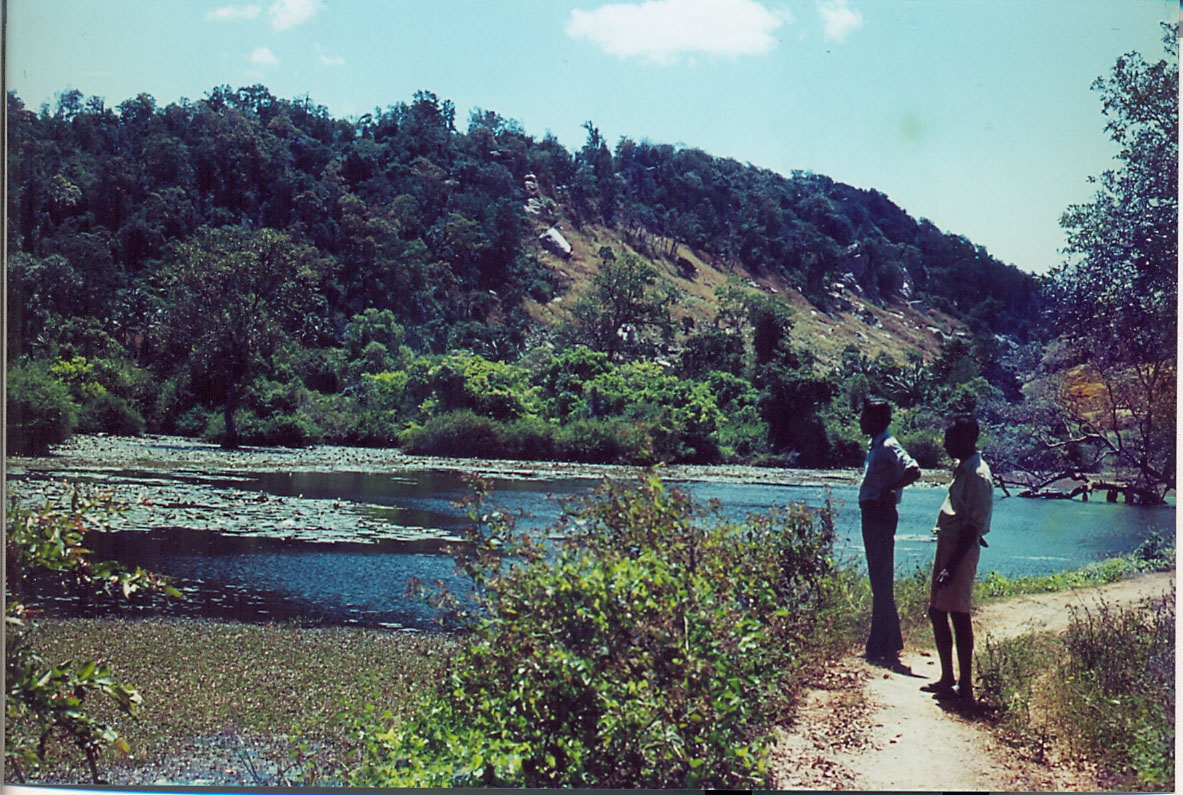Kalugalla is a village in the Hiriyala Hatpattuwa in the Kurunegala district of North Western Province in Sri Lanka (7.697N 80.377E). The village is almost in the boundary of a vast region of northern Sri Lanka known as Wanni. The original village was established in the mid nineteen forties. It was a quaint forest village secluded in the middle of tropical forest bounded by two rivers Hakwatuna Oya and Kimbulwana Oya the branches of a major river Deduru Oya. There was a well defined unsurfaced access road joining neighbouring rural towns Hiripitiya and Galtanwewa, which ran on one boundary of the village. The village was about 5 miles from the nearest civic amenities in any direction. On Sundays the villagers travelled by bullock cart to the nearest rural town Hiripitiya which had a Sunday market to buy provisions. In the earlier times the rivers had to be crossed on sand and a trickling stream, which can be quite hazardous during monsoon rainy periods that can turn into a raging torrent. The village comprised three or four farmers and few other families working in the father's farmland known as Kalugalla Estate, which was much larger than the other farmlands. Village was served with an irrigation reservoir known in Sri Lanka as a village tank. Downstream of the reservoir and paddy fields father built a smaller reservoir to feed one of his rice fields. Upstream of the village reservoir there was a ridge of hill that formed the village boundary on one side. The Kalugalla Estate was developed into coconut plantation in parts. After removing the timber from the virgin forest the scrub jungle is slashed and burnt and subsidiary crops like chillies, mung pea, cowpea, sesame (gingelly), pumpkins, bananas and pineapples are grown. Coconut seedlings are planted simultaneously which grow for the long-term. This type of agricultural land development is slash and burn, however is not shifting cultivation. Usually the villagers bathe in the tank, which was overgrown with water weeds. When we were on school holidays we often went to Hakwatuna Oya to bathe which was about one mile from the estate. Usually the river had a trickle of flow and we had to walk upstream of the river to find rocky pools. The river beds were very sandy with lot of pebbles. River banks and the tank margins were lined with lots of Kumbuk trees that grow on riverine environments. In the nineteen fifties a causeway was built across the Hakwatuna Oya. Much later a causeway was built to cross the Kimbulwana Oya. Simultaneously the rivers were dammed upstream there by reducing the frequency of flooding the causeways. Traditionally people hang a twig by the river bank at the crossing as an offering to the local gods for safety and protection. Aiyanayaka Deiyo (god) is the guardian of well-being in the Wanni region.
The surrounding forest sheltered the indigenous hardwood trees like satin (Chloroxylone Swietenia), ebony (Diospyros Ebenum), halmilla (Berrya Ammonilla), mora (Dimorphandra Mora) and palu (Mimusops hexandra); the wild life, monkeys , elephants, deer, wildbore; and the birds hornbill, jungle fowl, green pigeon and many other species. The Jungle Tide by John Still describes the forest in the tea plantations in highlands in the central Sri Lanka, which has a sub-tropical climate in contrast to the tropical climate in the region of Wanni. The Village in the Jungle by Leonard Wolf presents a philosophical narrative of Jungle Tide in Sri Lanka.
In Sri Lanka the rural land for homesteads and urban land for housing are a scarce resource. Hence in the late sixties the surrounding jungle was cleared for human settlements. The Kalugalla village was expanded and since then the essential social amenities like schools and hospitals have been established. Obviously the natural ecosystems of birds, wildlife and flora in the region have been lost. To compensate for these losses and to preserve the past memories I have inspired my family to establish a nature reserve in the Kalugalla Estate.
